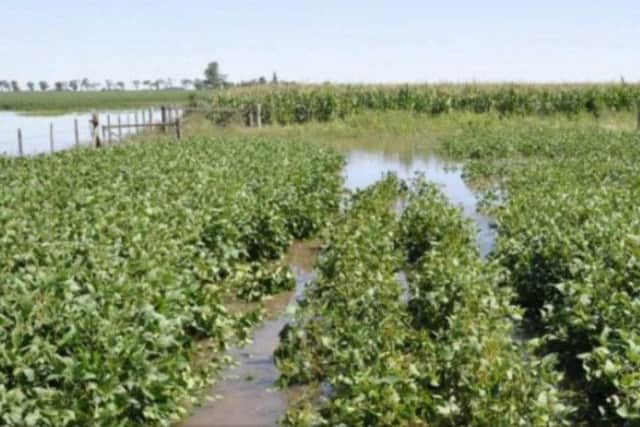Weather hits the Soya harvest


The run of record large soybean crops in this region has now come to a screeching halt as weather has played havoc with the harvest and with the movement of the crop to the ports.
The Brazilian soybean crop had problems from the beginning of the growing season, so it was no surprise that the early estimates have been trimmed as the harvest progressed. The crop is now ending on a poor note due to dryness in North Eastern Brazil and wetness in far southern Brazil.
Advertisement
Hide AdAdvertisement
Hide AdThe big surprise has been the terrible end to the growing season in Argentina. Up until a few weeks ago Argentinean farmers had been expecting a record soybean harvest. The weather during the entire 2015/16 growing season was nearly ideal but as the crop was approaching maturity the rain started to fall and continued falling for several weeks. As a result, widespread areas in eastern and northern Argentina experienced extensive flooding with as much as 60% of the farmland under water. This region of Argentina is very flat with almost no slope to the land, so flood waters recede very slowly and the concern is that some soybean fields will be a complete loss due to beans sprouting and moulds developing in the crop. Even if the field is not flooded continuous wet weather can have a devastating impact on the crop resulting in shrunken, lightweight beans. The crop is now forecast to be down around 8% on the 2105 harvest with the hardest hit areas down by up to 30%.


The harvest in Argentina has basically been paralysed for three weeks due to the wet weather. In a recent estimate, the Buenos Aires Grain Exchange estimates the soybean harvest at 16% complete compared to 46% harvested at the same point last year. This marks the slowest soybean harvest in Argentina in at least a decade.
This has played havoc with shipping programs as vessels queue in the River Plate awaiting the arrival of the crop at the ports as lorries struggle through a flooded and damaged road system.
The impact of these delays has been to drive up prices in the consuming countries with soya meal on the local spot market up by £40 to £50 per tonne in the last three weeks or so. Hopefully this is a reaction to concerns about supplies in the short term and there will be some correction as weather improves and shipments catch up with demand. However with global production forecasts now trimmed by 5M tonnes the expected reduction in stocks is bound to bring some firmness to a market which has been in a steady decline for the last year or so.